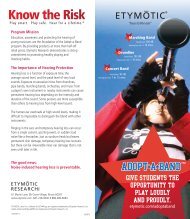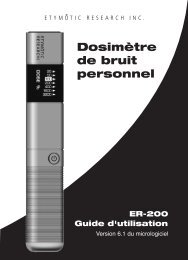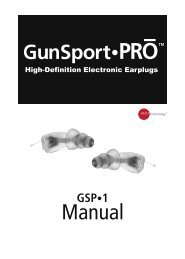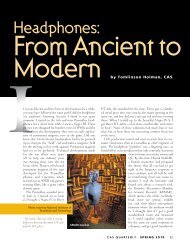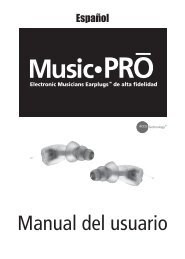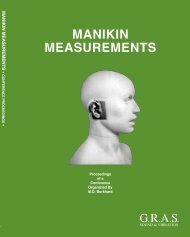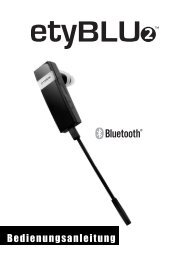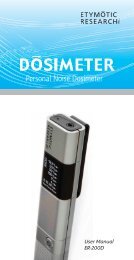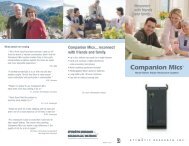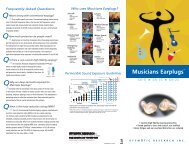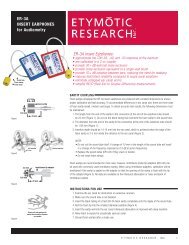ER-200D Personal Noise Dosimeter with Data Logging User Manual
ER-200D Personal Noise Dosimeter with Data Logging User Manual
ER-200D Personal Noise Dosimeter with Data Logging User Manual
Create successful ePaper yourself
Turn your PDF publications into a flip-book with our unique Google optimized e-Paper software.
Introduction<br />
Hearing loss from loud sound affects millions of people.<br />
<strong>Noise</strong>-induced hearing loss is preventable, but most people<br />
don’t know how long they can listen to loud sound <strong>with</strong>out<br />
risking hearing damage. A single noise exposure may not<br />
result in hearing loss, but permanent damage to the inner<br />
ear from noise adds up over time. The accumulation of too<br />
much noise day by day, year after year, is the determining<br />
factor in hearing loss risk. A sound level meter is a device<br />
that measures noise at a particular point in time, while<br />
a dosimeter measures sound levels for many hours and<br />
calculates the cumulative noise dose in percent.<br />
Daily noise dose is determined by both the intensity of the<br />
sound and the amount of exposure time. A 100% dose<br />
means that a person has reached the maximum noise<br />
exposure for the day, and continued exposure to loud sound<br />
could lead to hearing loss. Ideally, hearing protection should<br />
be used before the dose reaches 100% since dose limits are<br />
based on averages, and some ears are more susceptible to<br />
noise damage than others. When the noise dose exceeds<br />
50% a person has reached half the maximum noise exposure<br />
for the day and it’s a good idea to use hearing protection to<br />
prevent over-exposure, particularly if a 50% dose reading is<br />
reached early in the day.<br />
5




